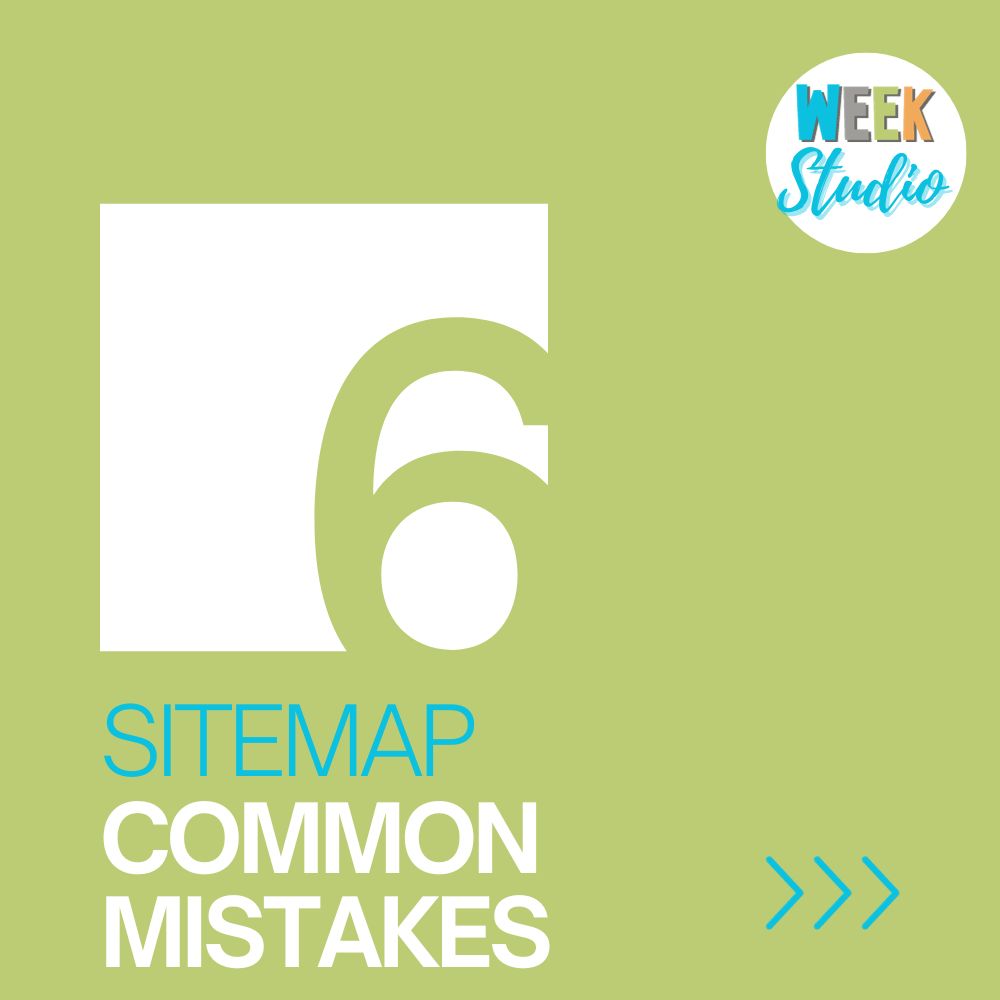In the dynamic realm of the internet, where websites strive for visibility and recognition, the concept of a sitemap emerges as a crucial tool in navigating the complex landscape of search engines and user experience. Imagine it as a digital compass, guiding both search engine crawlers and users through the intricate maze of web pages.
So, what exactly is a sitemap, and why does it play such a pivotal role in the online ecosystem? At its core, a sitemap is a structured map of a website, providing a clear and organized layout of its pages, content, and multimedia elements. This article aims to demystify the essence of sitemaps, exploring their types, creation process, and the myriad benefits they bring to the forefront of SEO and user interaction.
Join me on this exploration, where we’ll unravel the layers of sitemaps and understand how these digital guides shape the way websites are discovered and experienced in the vast and ever-evolving landscape of the internet.
Types of Sitemaps

In the expansive world of sitemaps, understanding the diverse types is crucial for wielding their full potential. Sitemaps come in various forms, each serving specific purposes in enhancing website visibility and indexing. Let’s delve into the intricacies of these types:
XML Sitemaps
At the core of search engine communication lies the XML Sitemap. This type of sitemap is specifically designed for search engines, providing a comprehensive list of URLs within a website along with additional information like the last modified date and frequency of updates. XML Sitemaps serve as a direct line of communication, aiding search engine crawlers in efficiently navigating and indexing a site’s content.
HTML Sitemaps
In the realm of user experience, HTML Sitemaps take center stage. Unlike XML Sitemaps tailored for search engines, HTML Sitemaps are crafted for human users. These user-friendly sitemaps present a visual outline of a website’s structure, making navigation intuitive and straightforward. HTML Sitemaps are often linked from a website’s homepage, acting as a handy guide for visitors.
Image and Video Sitemaps
Beyond textual content, multimedia elements hold significant importance in the digital landscape. Image and Video Sitemaps cater specifically to these rich media types, offering a roadmap for search engines to discover and index visual content effectively. By providing additional metadata, these sitemaps enhance the chances of multimedia elements appearing in relevant search results.
Understanding the nuances of each sitemap type lays the foundation for strategic implementation. Join me in the upcoming sections as we unravel the intricacies of creating sitemaps and explore the benefits they bring to the forefront of website optimization and user experience.
Creating a Sitemap

Now that we’ve explored the diverse types of sitemaps, it’s time to unravel the process of crafting these digital guides. Creating an effective sitemap involves understanding the structure and utilizing tools that streamline the generation process.
XML Sitemap Structure
Crafting an XML Sitemap involves meticulous attention to detail. The structure typically includes:
2023-12-20
weekly
0.8
- : The URL of the page.
- : The date the page was last modified.
- : How frequently the page is likely to change.
- : The priority of the URL in relation to other pages on the site.
Tools for Generating Sitemaps
Creating a sitemap manually can be intricate, but various tools simplify the process. Platforms like Google Search Console, Yoast SEO for WordPress, and online sitemap generators enable website owners to effortlessly generate XML Sitemaps. For HTML Sitemaps, content management systems often offer built-in tools, making the creation process more accessible.
As we move forward, we’ll delve into the significant benefits that sitemaps bring to the table, impacting both SEO and user experience. Join me in the next section as we uncover the reasons why sitemaps are integral to a website’s success.
Benefits of Having a Sitemap

Crafting a sitemap is not just a technicality; it’s a strategic move that ripples through the fabric of website optimization. Let’s unravel the substantial benefits that sitemaps bring to the forefront of SEO and user experience:
Enhanced Crawlability
Search engines employ crawlers to navigate and index the vast terrain of the internet. A well-structured XML Sitemap acts as a guiding beacon, directing these crawlers to essential pages within a website. By explicitly listing URLs and their associated metadata, a sitemap ensures that search engines efficiently crawl and index the most critical content, enhancing the overall visibility of the site.
Improved Indexation
The comprehensive nature of sitemaps, particularly XML Sitemaps, aids search engines in understanding the hierarchy and priority of pages within a website. This understanding translates to improved indexation, ensuring that a broader array of pages is included in search engine databases. This, in turn, contributes to a more accurate and extensive representation of the website in search results.
In the upcoming sections, we’ll explore the profound impact of sitemaps on SEO, shedding light on how these digital guides influence search engine rankings and contribute to a seamless user experience. Join me as we dive into the intricacies of the symbiotic relationship between sitemaps, SEO, and website navigation.
Impact on SEO

In the intricate dance between websites and search engines, sitemaps emerge as key players that influence the performance of a site in search results. Let’s unravel the direct and indirect impact of sitemaps on Search Engine Optimization (SEO):
Sitemap’s Role in Search Engine Rankings
Search engines, led by complex algorithms, determine the relevance and authority of a website in response to user queries. An intelligently crafted XML Sitemap serves as a direct communication channel with search engines, providing vital information about the structure and priority of pages. This transparency positively impacts search engine rankings, as crawlers can efficiently navigate and understand the site’s content hierarchy.
Ensuring All Pages are Crawled and Indexed
The digital landscape is expansive, and not all pages within a website receive equal attention. A sitemap acts as a curator, guiding search engine crawlers to all corners of a site. This ensures that even lesser-known or recently added pages are discovered, crawled, and ultimately indexed. The more comprehensive the indexation, the higher the likelihood of a website appearing in diverse search queries.
As we progress, we’ll explore how sitemaps contribute not only to SEO but also to the overall user experience. Join me in the next section as we unravel the symbiotic relationship between sitemaps and user-friendly website navigation.
Sitemaps and User Experience

While the primary function of sitemaps is to assist search engine crawlers, their impact extends beyond SEO. Sitemaps play a crucial role in enhancing the overall user experience, making website navigation more intuitive and user-friendly:
Facilitating Website Navigation
For human visitors, navigating a complex website can be akin to exploring a vast city without a map. This is where HTML Sitemaps shine. By offering a visual and structured overview of a site’s layout, HTML Sitemaps become a user-friendly tool for visitors to quickly locate the information they seek. This not only improves user satisfaction but also reduces bounce rates as users find it easier to discover relevant content.
User-Friendly HTML Sitemaps
HTML Sitemaps are designed with the user in mind. Unlike XML Sitemaps, which are primarily for search engines, HTML Sitemaps are crafted to cater to human interaction. They are often linked from a website’s homepage, providing a straightforward path for users to explore different sections. This simplicity enhances the overall user experience, making the website more accessible and engaging.
In the forthcoming sections, we’ll delve into common mistakes to avoid when dealing with sitemaps and explore best practices that ensure these digital guides serve their purpose effectively. Join me as we navigate the nuances of strategic sitemap implementation.
Common Mistakes to Avoid

In the realm of sitemaps, strategic implementation is key to reaping their full benefits. However, certain pitfalls can hinder their effectiveness. Let’s explore common mistakes that website owners should steer clear of:
Incorrectly Formatted Sitemaps
One prevalent mistake is creating sitemaps with incorrect formats. For XML Sitemaps, adherence to the specified structure is crucial. A single error in the XML markup can render the entire sitemap ineffective. Regularly validate sitemaps using tools provided by search engines to ensure correct formatting.
Ignoring Updates and Additions
Websites are dynamic entities, constantly evolving with updates, new content, and structural changes. One of the mistakes to avoid is neglecting to update sitemaps accordingly. Failing to include new pages or changes in the sitemap can result in incomplete indexation and hinder the discoverability of fresh content.
In the upcoming sections, we’ll explore best practices for sitemaps, guiding website owners on how to harness the full potential of these digital guides. Join me as we unravel the strategies that ensure sitemaps play a proactive role in website optimization.
Best Practices for Sitemaps

Navigating the intricacies of sitemaps requires not only an understanding of their types and creation but also a commitment to best practices. Let’s delve into the strategies that elevate sitemaps from mere guides to strategic assets:
Regularly Updating Sitemaps
Dynamic websites demand dynamic sitemaps. Regular updates are imperative to reflect changes in content, page structures, or any modifications that influence website navigation. Periodically review and refresh both XML and HTML sitemaps to ensure they accurately mirror the evolving landscape of your website.
Including Only Essential Pages
Sitemaps are not exhaustive directories; they are curated guides. Include only essential pages in your sitemaps, focusing on core content and high-priority sections. This not only streamlines the crawling process for search engines but also enhances the user experience by presenting a concise and relevant overview.
As we progress, we’ll explore the significance of mobile sitemaps, especially in the era of mobile-first indexing. Join me in the next section as we unravel the importance of mobile-friendly sitemaps and how they contribute to a robust mobile SEO strategy.
Mobile Sitemaps

In the era of smartphones and the increasing dominance of mobile browsing, the significance of mobile optimization cannot be overstated. Mobile sitemaps emerge as essential components in ensuring a seamless mobile user experience and robust mobile SEO:
Importance for Mobile SEO
Mobile sitemaps are tailored guides that specifically address the nuances of mobile browsing. With Google’s shift towards mobile-first indexing, where the mobile version of a site takes precedence in indexing and ranking, having a mobile-friendly sitemap becomes paramount. It ensures that search engine crawlers efficiently navigate and index the mobile version of your site, contributing to optimal visibility in mobile search results.
Mobile-Friendly Sitemap Creation
Crafting a mobile-friendly sitemap involves considering the unique characteristics of mobile content. Ensure that the URLs listed in the mobile sitemap accurately reflect the structure and content of the mobile version of your site. This includes accounting for any mobile-specific pages, configurations, or multimedia elements.
As we approach the conclusion of our exploration, we’ll peek into the future of sitemaps, anticipating emerging trends and potential advancements. Join me in the next section as we unravel the evolving landscape of sitemaps and their role in shaping the future of website optimization.
Future Trends in Sitemaps

As technology continues to evolve, the role of sitemaps is poised for refinement and adaptation. Let’s explore the emerging trends that may shape the future of sitemaps:
Evolving Standards and Features
Sitemaps may witness advancements in standards and features, providing more granular control over how search engines interpret and prioritize content. The evolution of protocols and guidelines could introduce new directives or attributes, offering website owners enhanced flexibility and precision in guiding search engine crawlers.
Integration with Advanced Technologies
The future might see increased integration of sitemaps with advanced technologies such as machine learning and artificial intelligence. This integration could empower search engines to better understand the context and relevance of content, further optimizing the indexing process. As algorithms become more sophisticated, sitemaps may play an even more nuanced role in shaping search results.
In the final stretch of our exploration, we’ll pivot from the future to actionable insights. Join me in the concluding section as we recap the importance of sitemaps and encourage a proactive and strategic approach for website owners to navigate the ever-evolving digital landscape.
Conclusion

In the dynamic and ever-expanding digital landscape, sitemaps emerge as silent architects, shaping the interaction between websites and search engines. As we conclude this journey through the intricacies of sitemaps, it’s crucial to recap their significance and encourage a proactive approach:
- Strategic Implementation: Crafting a meticulous sitemap is not just a technicality; it’s a strategic move that influences crawl efficiency, content indexing, and website security.
- Balancing Act: While sitemaps enhance SEO, striking a balance between privacy and indexing needs ensures optimal performance. Include only essential pages to streamline the crawling process.
- Dynamic Adaptation: The digital landscape evolves, and so should your sitemap. Regular updates and alignment with emerging trends are crucial for sustained effectiveness.
As you navigate the intricate terrain of the digital realm, remember that a sitemap is more than a set of directives; it’s a navigator, a facilitator, and a bridge between embrace the power it holds to shape your website’s interaction with search engines and elevate the user experience.
Feel free to delve deeper into any aspect covered or raise questions on the journey we’ve undertaken. In the final segment, we’ll address unique FAQs, shedding light on any lingering uncertainties. Join me in the last leg of our expedition as we wrap up this exploration of sitemaps and their integral role in website optimization.
Frequently Asked Questions (FAQs)
- Q: How often should I update my sitemap? A: Regular updates are crucial, especially when there are changes in site structure, content, or SEO strategy. Conduct thorough reviews every few months to keep the sitemap aligned with evolving website needs.
- Q: Can I have multiple sitemaps for different sections of my website? A: Yes, it’s a good practice. Having multiple sitemaps, each focused on specific content or sections, allows for better organization and control. Ensure each sitemap is linked in your robots.txt file.
- Q: Do HTML sitemaps impact SEO, or are they just for users? A: HTML sitemaps primarily aid users in navigation, but they indirectly contribute to SEO by improving user experience and reducing bounce rates. XML sitemaps are more directly tied to SEO.
- Q: How can I ensure my mobile sitemap is effective for SEO? A: Craft your mobile sitemap to accurately reflect the structure and content of the mobile version of your site. Ensure mobile-specific pages and configurations are included for optimal mobile SEO.
- Q: What’s the future of sitemaps in SEO? A: The future may bring evolving standards, features, and increased integration with advanced technologies like machine learning. Stay informed about industry updates to adapt your sitemap strategy.
Feel free to explore these questions further or raise any additional queries you might have!
